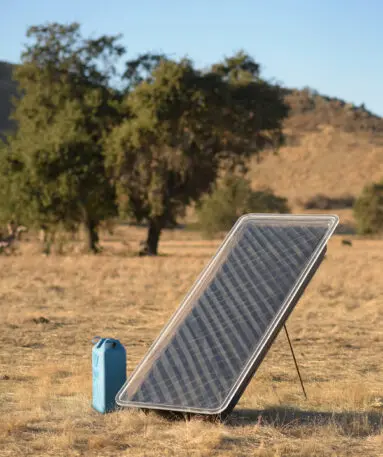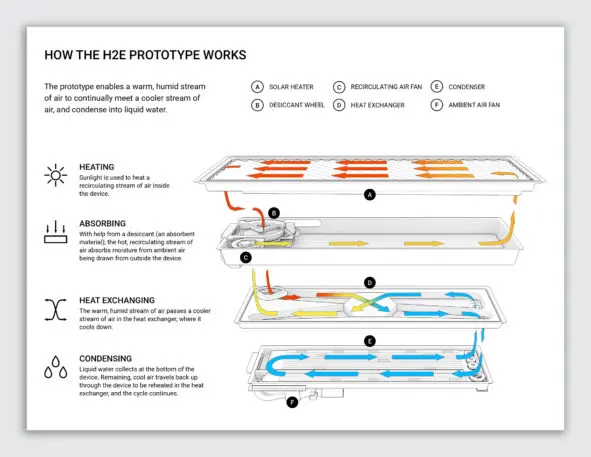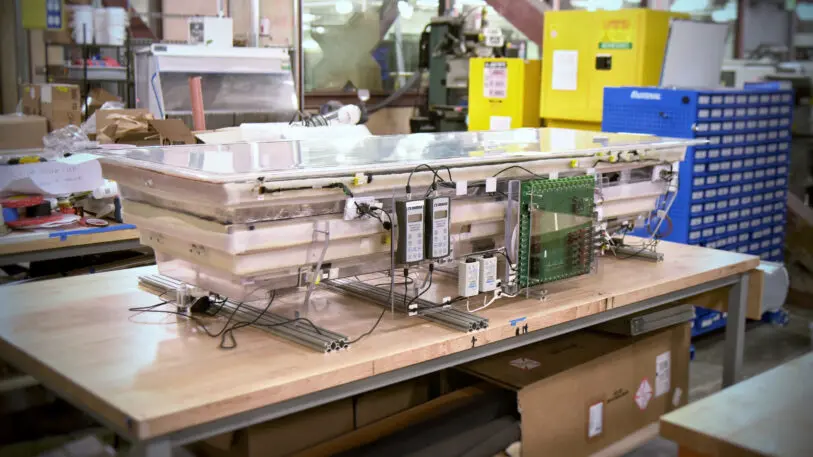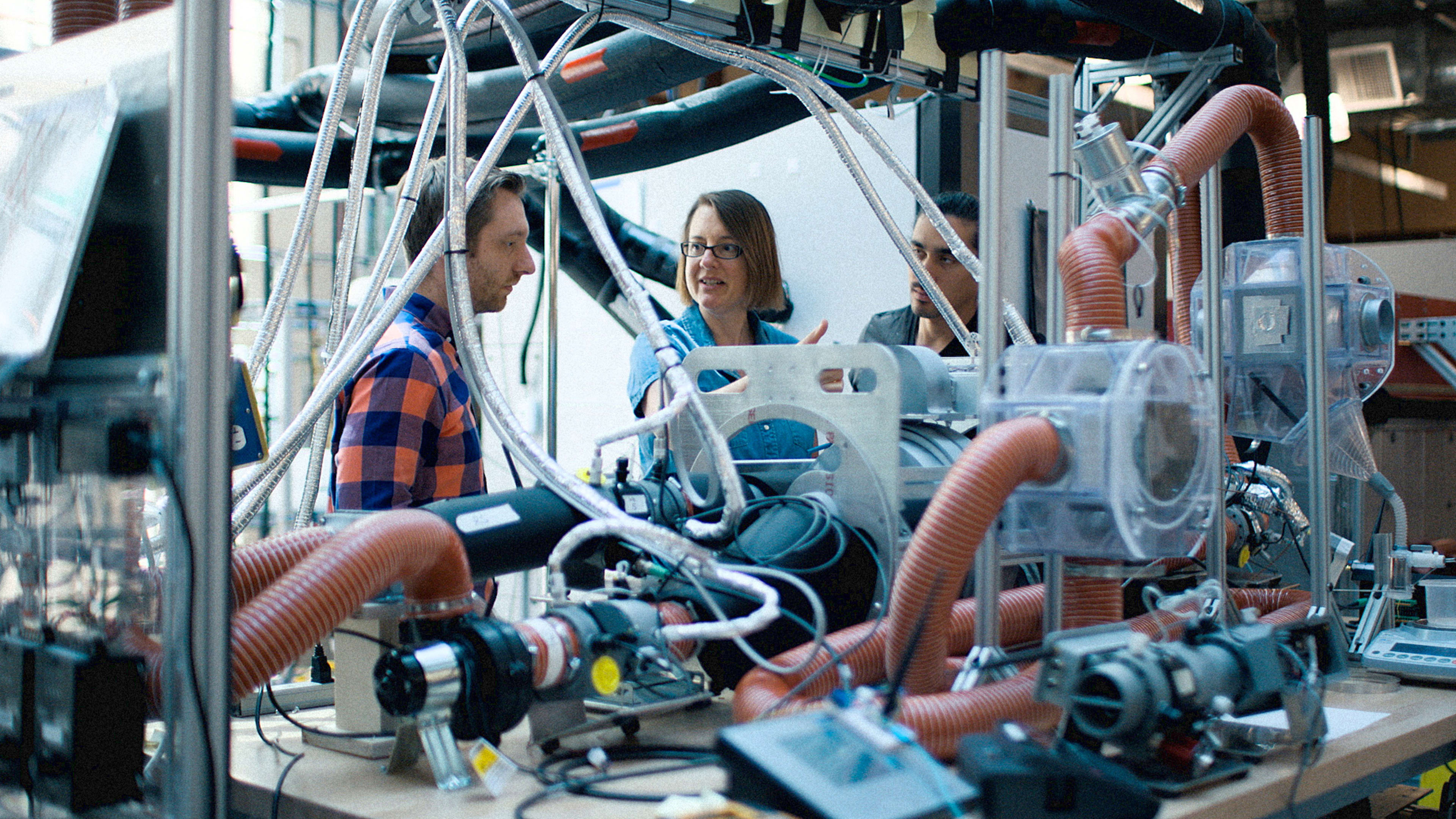Last year, on the roof of a parking lot at Google’s headquarters, engineers from X—Alphabet’s “moonshot factory”—set up a panel to begin its first tests. The design, called an atmospheric water harvester, pulls in outside air, then uses fans and heat from sunlight to create condensation, producing clean drinking water drip by drip.

Because larger water infrastructure projects, like desalination plants, take many years to plan and build, the small devices could help fill the gap in the meantime. “This can leapfrog a lot of that and go directly to the source with a small device that’s solar powered,” says Jackson Lord, lead author of the paper, who previously worked at X on the project.

“One-tenth of 1% of the clean water in the world goes into our mouths,” says Astro Teller, the head of X. “The other 99.9% is for things like bathing and cleaning the dishes and agriculture and things like that. And all of that doesn’t have to be as clean…Once we had that perspective shift, all of the sudden solutions that hadn’t seemed plausible suddenly seemed plausible.”
Atmospheric water harvesting devices use a very large amount of energy to generate each liter of water, so the kind of simple, low-cost device the team developed could never produce enough water to meet every need. But, in many places, it can provide sufficient drinking water.
The device is designed to work off-grid, and eliminate every possible expense. It uses only a few solar photovoltaic cells to power its fans, and relies mostly on solar heat. (Some others, like a startup called Source, use a related design.) It has few parts. A fan pulls in outside air and a desiccant absorbs moisture from it. A second fan recirculates another stream of air heated by the solar collector. In the same way that dew naturally forms outside, when the warm air meets the cooler air inside the machine, drops of liquid form. The team’s prototype produced 150 milliliters of water per hour per square meter; a final device could likely produce five liters of water a day.

“We don’t always do this, but in this particular case, we felt like this had made enough of the right kinds of progress had enough of the right kinds of potential that sharing it with the rest of the world was actually going to get the benefits to the world faster than if we just kept it an X thing ourselves,” says Teller. “If we can accelerate the progress of delivering safe water in any way,” adds Lord, “we think that’s a worthy goal.”
Corrections: We’ve updated this article to reflect that the maps of where people need clean water from WHO and UNICEF already existed; X made new maps that showed where water harvesters could work. As well, the panels produce 150 milliliters of water per hour per square meter, not per square foot
Recognize your brand’s excellence by applying to this year’s Brands That Matter Awards before the early-rate deadline, May 3.
